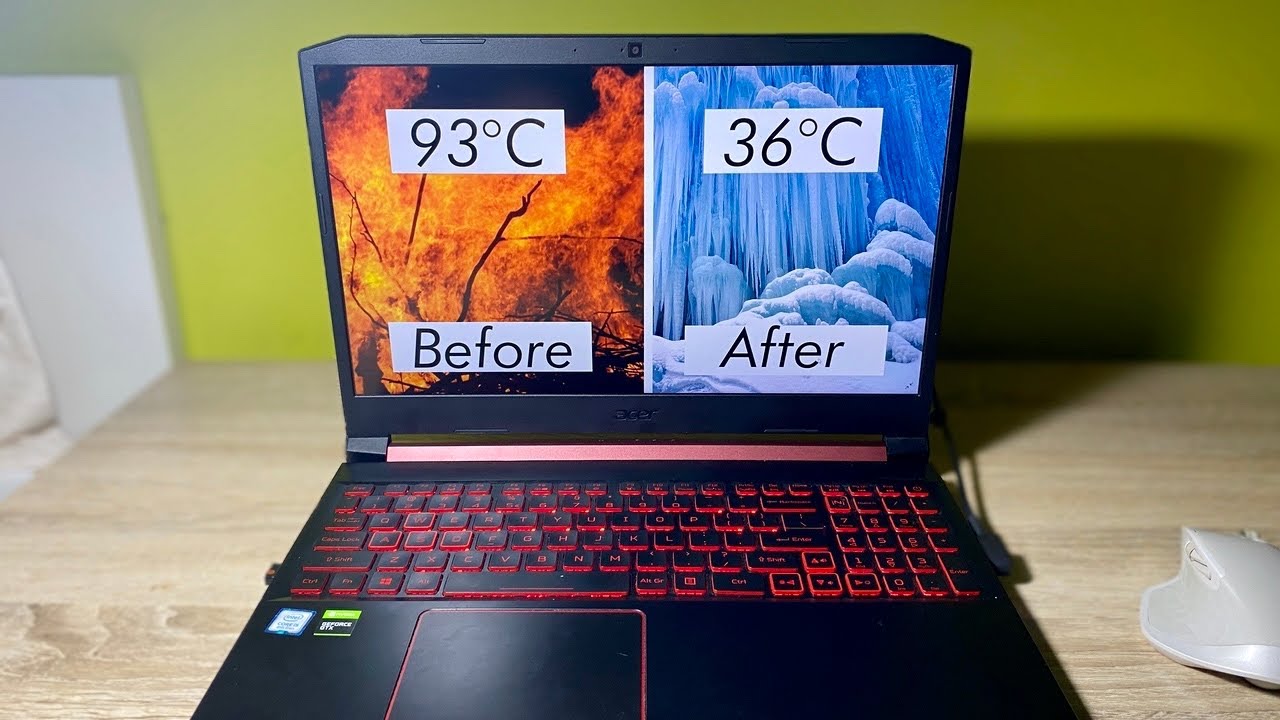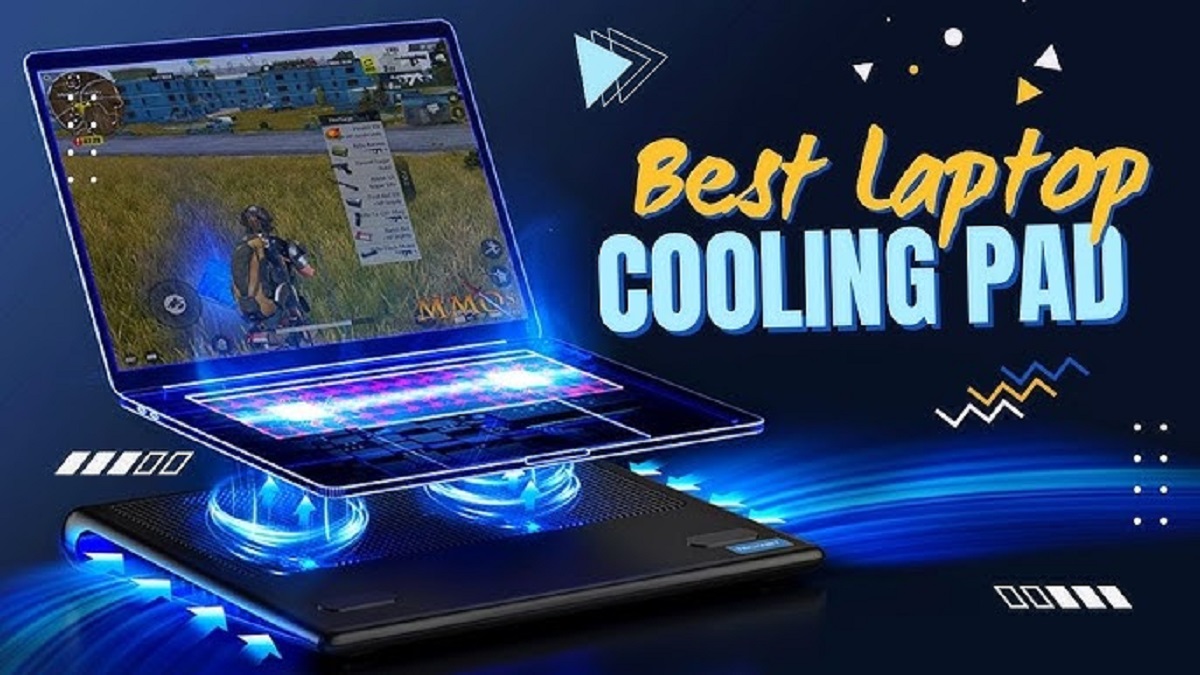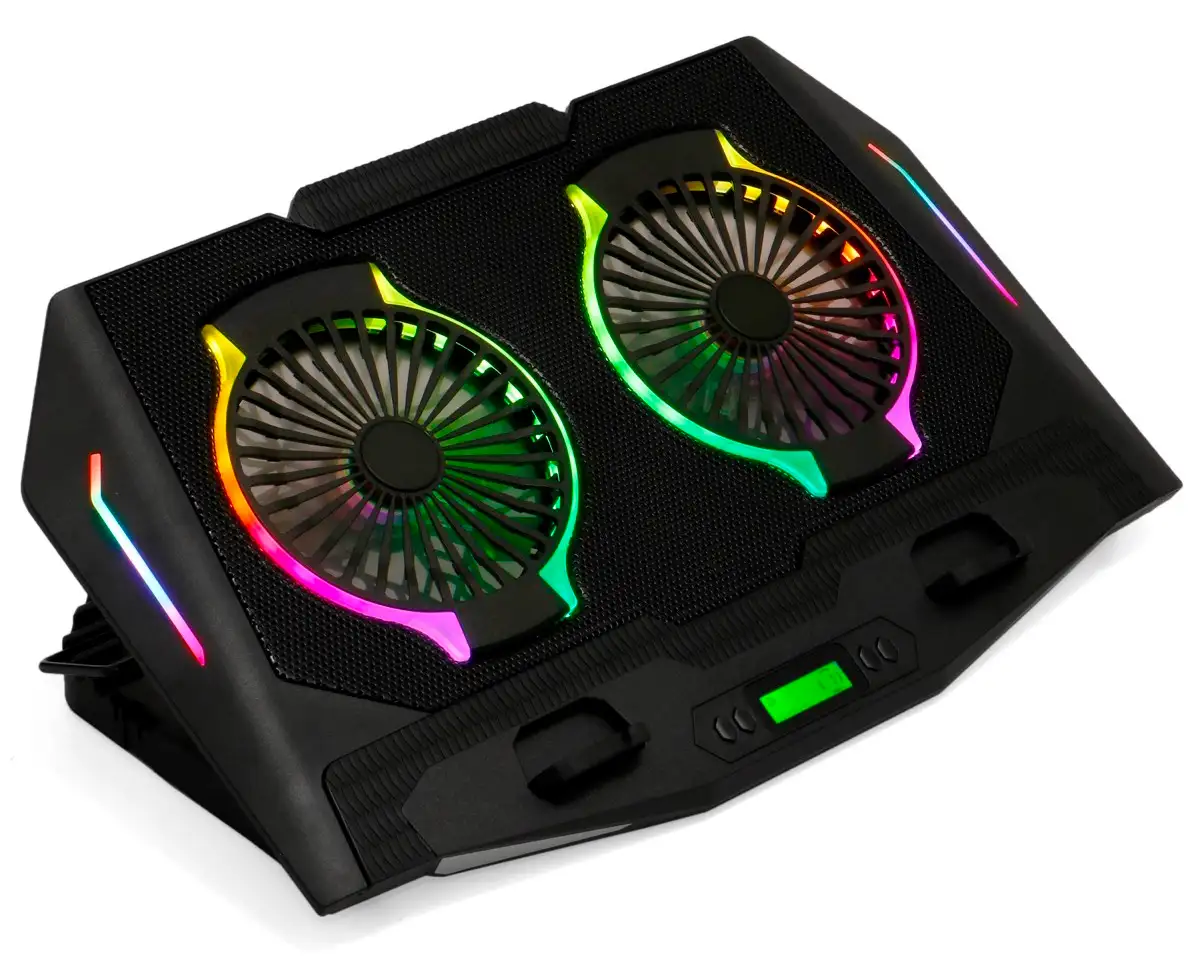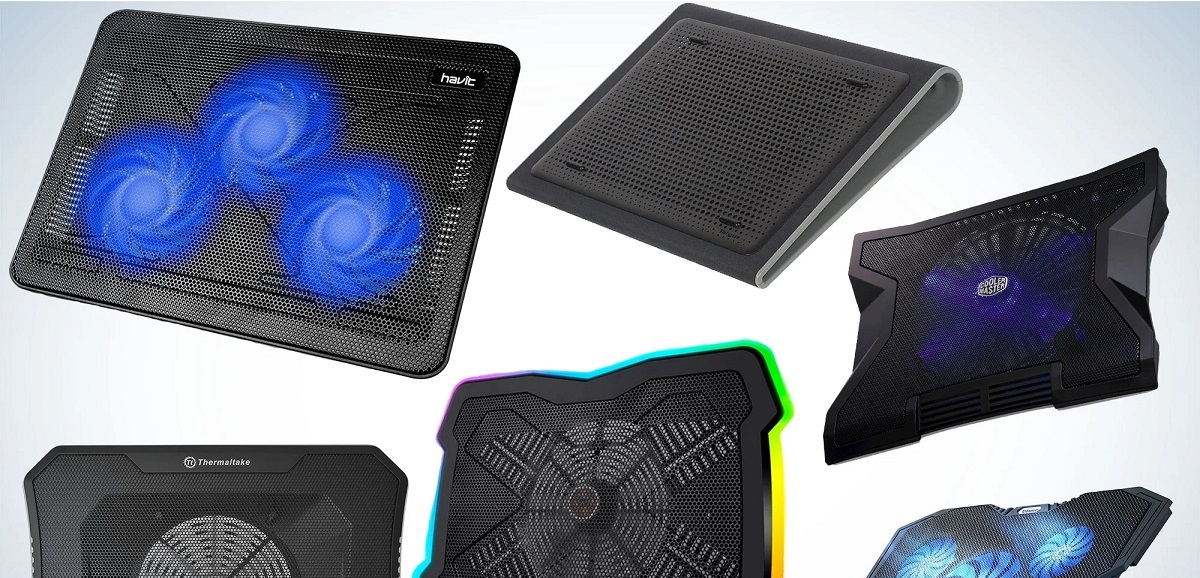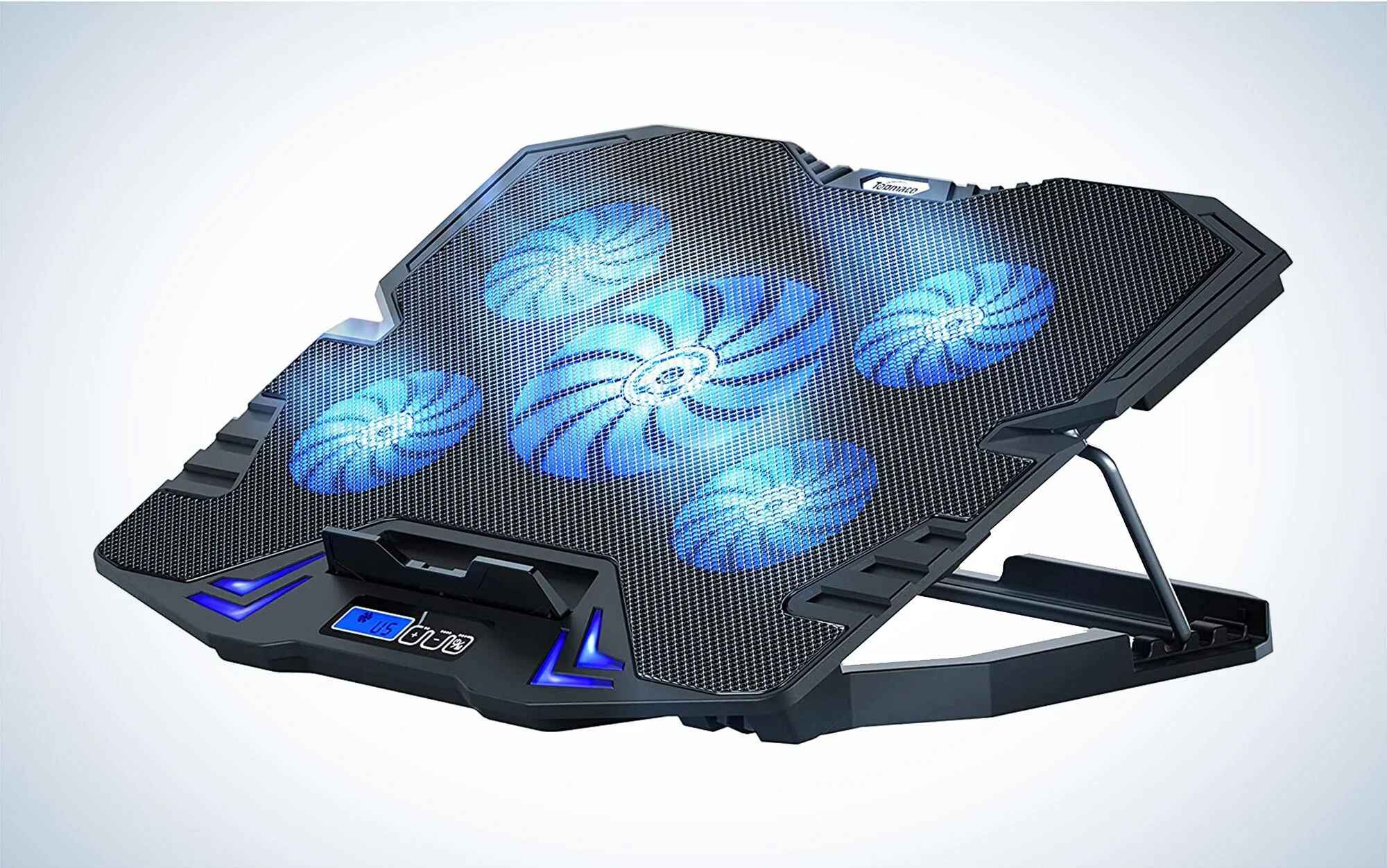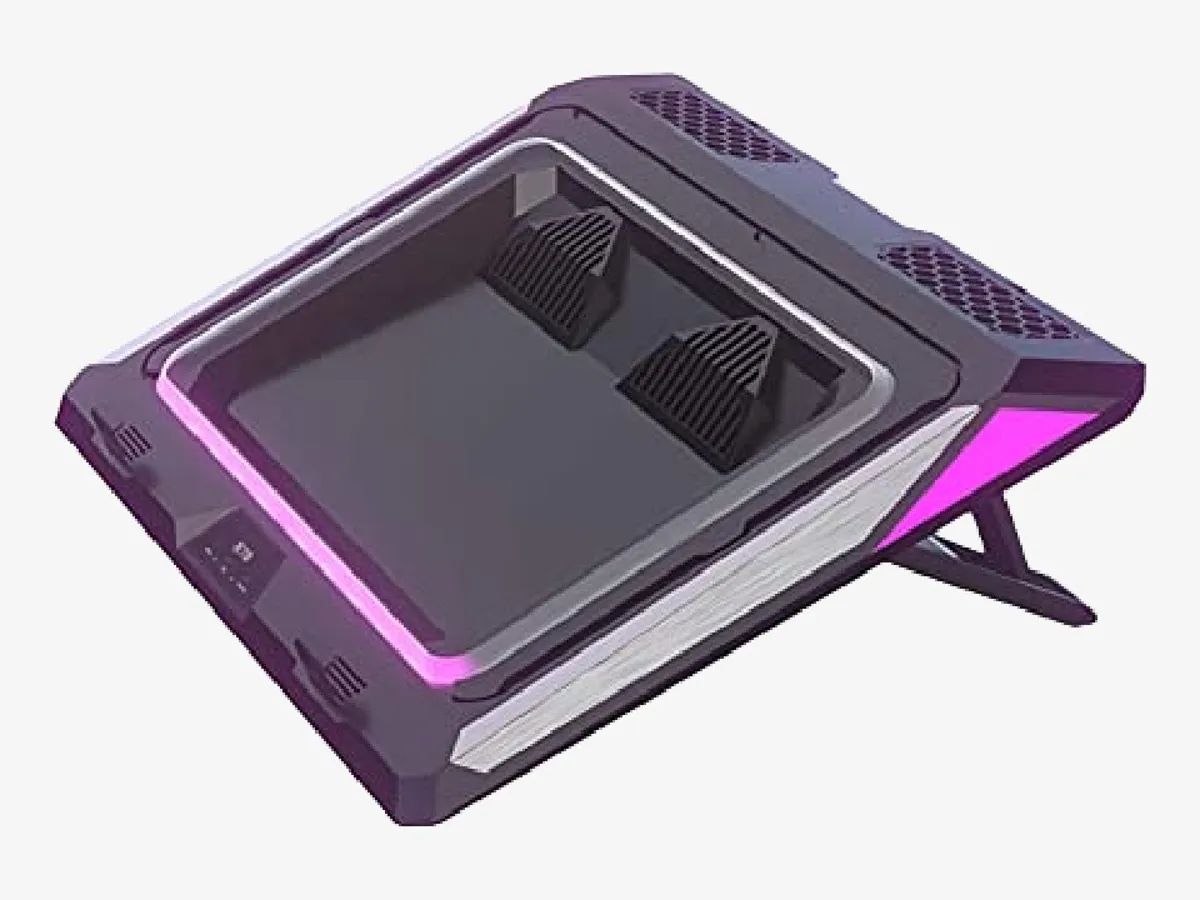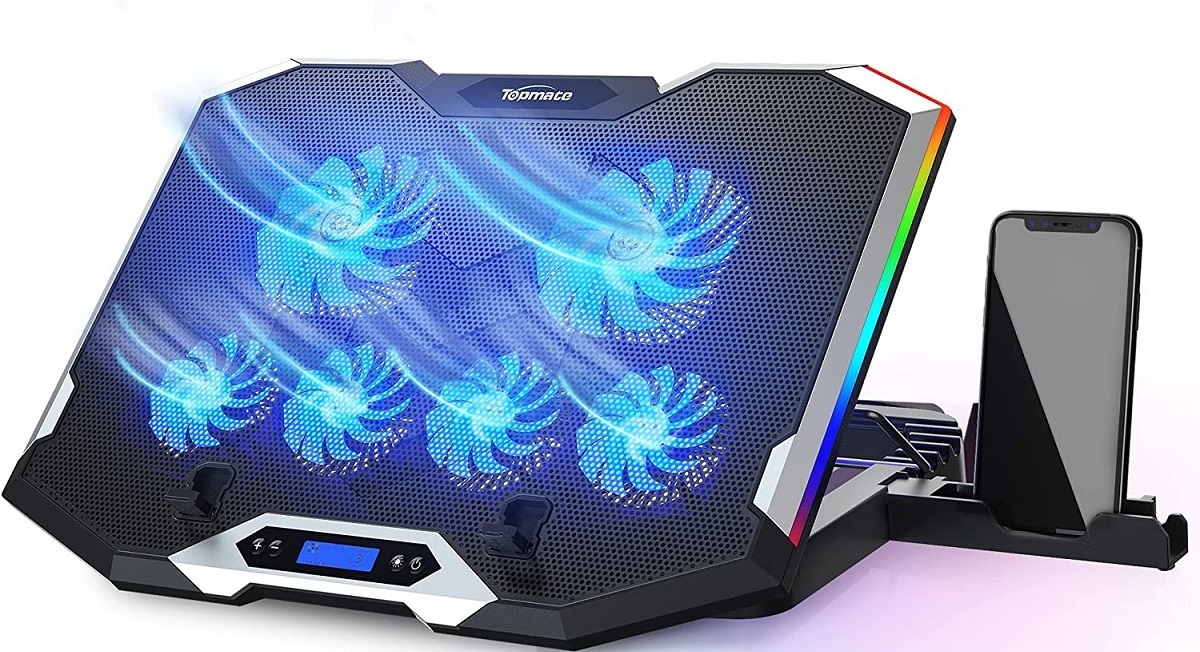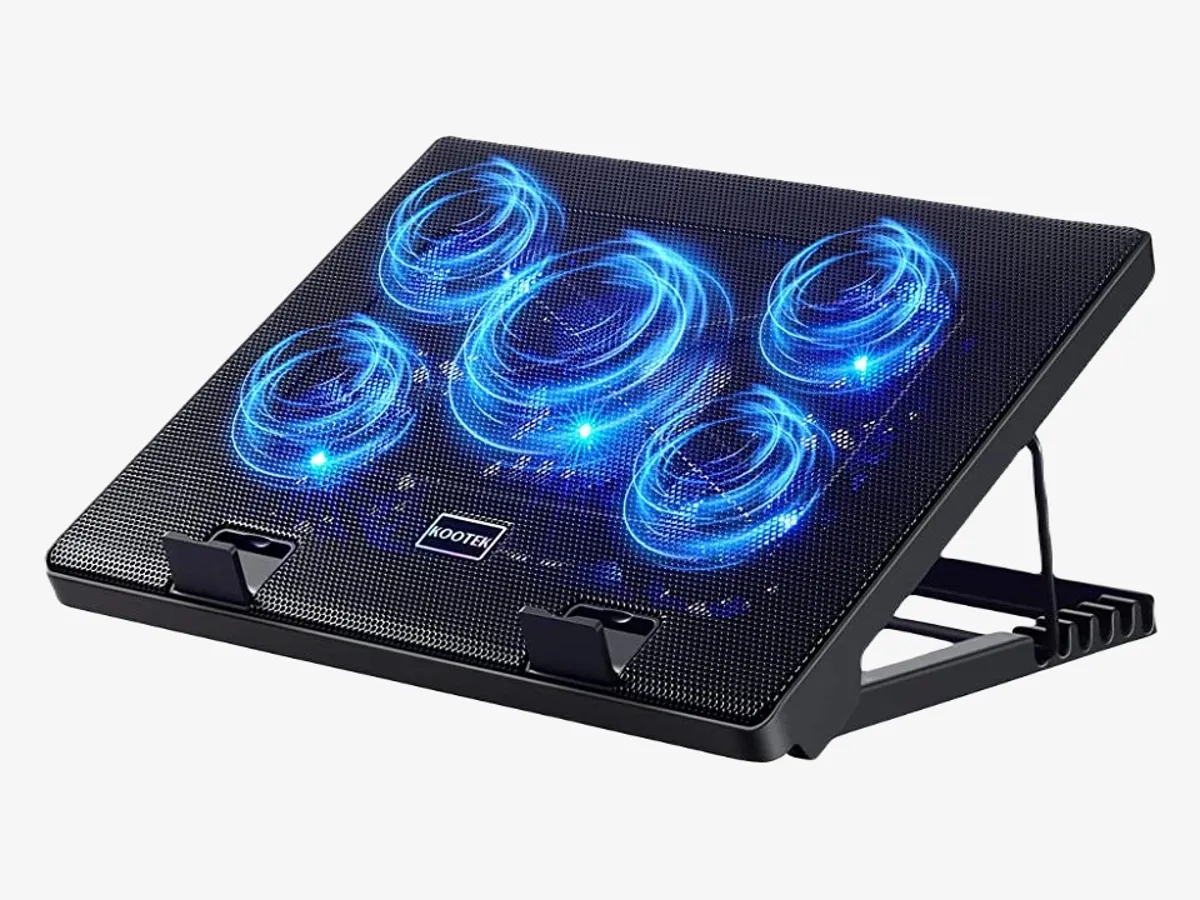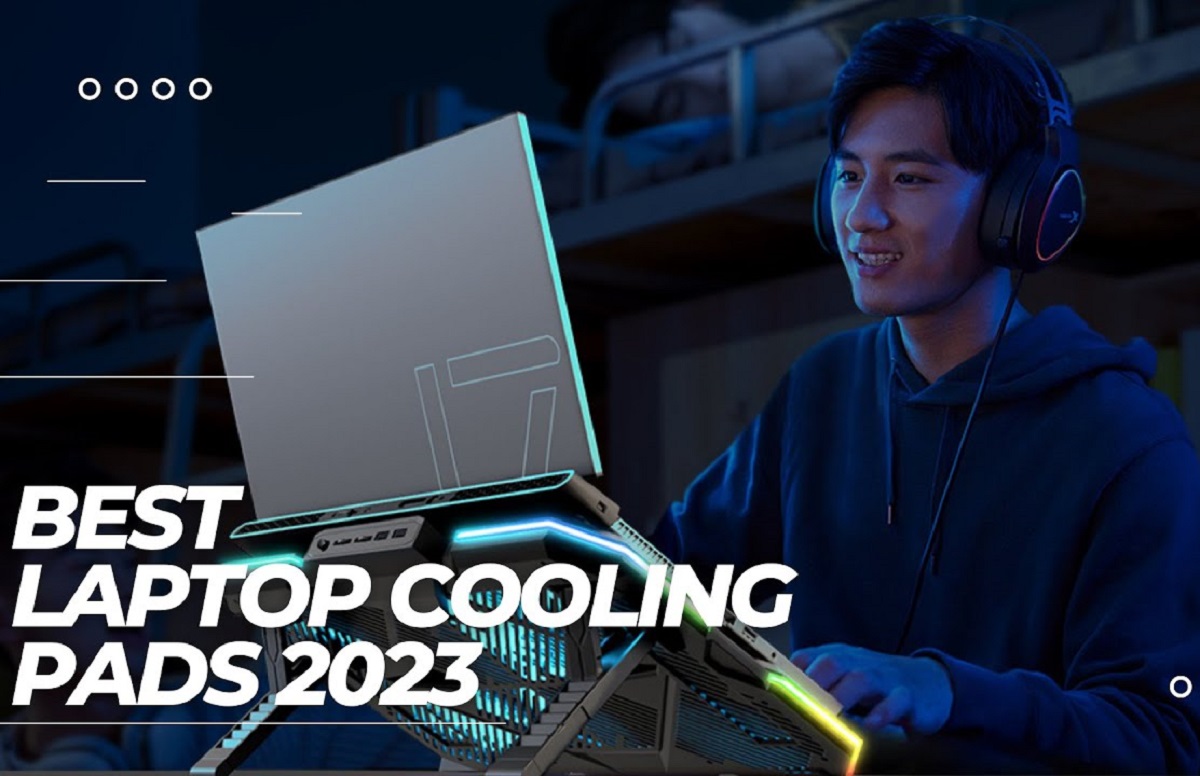Introduction
Are you tired of the incessant noise coming from your gaming laptop? Does the constant whirring of the fans disrupt your gaming experience or make it difficult to concentrate on your work? If so, you’re not alone. Many gaming enthusiasts are plagued by the noise produced by their laptops, but the good news is that there are steps you can take to make your gaming laptop quieter.
Before we delve into the solutions, it’s important to understand the reasons behind the excessive noise. Gaming laptops are equipped with powerful processors and graphics cards that generate a significant amount of heat during intense gaming sessions. To prevent overheating, the laptop’s cooling system, comprised of fans and heat sinks, kicks into high gear, resulting in the noise you hear.
The noise can be distracting, not to mention annoying, but the good news is that there are several practical steps you can take to reduce the noise levels and make your gaming laptop quieter. In this article, we will explore different methods to silence your laptop’s fans and create a more peaceful gaming environment.
Whether you’re a casual gamer or a professional, these tips will help you optimize the noise levels of your gaming laptop while maintaining optimal performance. So, let’s dive in and discover how to make your gaming laptop quieter!
Assessing the Noise
Before you start making any changes to your gaming laptop, it’s important to assess the source and intensity of the noise. This will help you identify the underlying issue and determine the most effective solution.
Begin by identifying the specific components that are causing the noise. Is it primarily the fan or perhaps the hard drive? Use your ears and pay close attention to where the noise is coming from. Additionally, check if the noise occurs consistently or only during certain activities, such as gaming or running demanding applications.
Next, consider the intensity of the noise. Is it a low hum, or is it a loud, disruptive noise? This will give you an idea of how severe the issue is and how urgently you need to address it.
Another factor to consider is the temperature of your laptop. If your laptop is running hot, it is likely that the fans are working harder to cool it down, resulting in increased noise. Use monitoring software to check the temperatures of your CPU and GPU while your laptop is under load. If the temperatures are excessively high, it may be a sign that your cooling system needs improvement.
By assessing these factors, you will have a better understanding of the noise and can proceed to the next steps with a clearer plan of action. Remember, it’s important to diagnose the issue before implementing any solutions to ensure you address the root cause and make effective changes.
Cleaning Your Laptop
Dust and debris can accumulate over time inside your gaming laptop, clogging the air vents and obstructing proper airflow. This build-up of dust can cause the fans to work harder and create more noise. Therefore, regular cleaning of your laptop is essential to keep it running smoothly and quietly.
Start by shutting down your laptop and disconnecting it from any power source. Use a soft, lint-free cloth or compressed air to gently clean the exterior of your laptop, removing any surface dust or dirt. Be cautious when using compressed air to avoid blowing the dust further into the laptop.
Next, focus on the air vents and cooling system. Use a can of compressed air to carefully blow out any dust or debris that may have accumulated in these areas. It’s important to keep the airflow pathways clear to prevent overheating and excessive fan noise. Take special care when cleaning the fans, as they are delicate components.
If you’re comfortable disassembling your laptop, you can go a step further and clean the internal components. However, this should only be done if you have experience or are confident in your abilities. Consult your laptop’s user manual or seek professional assistance if you’re uncertain.
Remember to also clean the keyboard and touchpad to maintain their functionality and prevent any build-up of dirt or debris. Use a soft cloth and a gentle cleaning solution to wipe these areas, being careful not to get any liquids inside the laptop.
Regularly cleaning your gaming laptop will not only help reduce noise but also improve its overall performance and longevity. By keeping it dust-free, you can ensure efficient cooling and a quieter gaming experience.
Replacing the Thermal Paste
The thermal paste is a crucial component in ensuring optimal heat transfer between your laptop’s processor and the cooling system. Over time, the thermal paste can dry out or become less effective, leading to poor heat dissipation and increased fan noise. Replacing the thermal paste can greatly improve the cooling efficiency of your laptop and subsequently reduce noise levels.
To replace the thermal paste, start by turning off your laptop and disconnecting it from any power source. Carefully remove the back panel of your laptop to access the CPU and GPU. Consult your laptop’s user manual or online resources for specific instructions on removing the back panel.
Once you have access to the CPU and GPU, locate the thermal paste. Gently clean off the old thermal paste using isopropyl alcohol and a lint-free cloth. Ensure that you remove all remnants of the old paste to achieve optimal results.
Next, apply a small amount of new thermal paste to the center of the CPU and GPU. Use a credit card or a dedicated tool to spread the paste evenly, creating a thin and uniform layer. Be careful not to apply too much paste, as this can result in poor heat transfer.
After applying the thermal paste, reattach the back panel of your laptop and secure it properly. Make sure all screws are tightened, but avoid over-tightening to prevent damage to the laptop’s components.
By replacing the thermal paste, you can improve the thermal conductivity between the processor and the cooling system, allowing for better heat dissipation and reduced fan noise. However, if you’re uncomfortable performing this task yourself, it’s advisable to seek assistance from a professional technician.
Controlling the Fan Speed
One of the most effective ways to reduce fan noise on your gaming laptop is by controlling the fan speed. By adjusting the fan speed, you can find the right balance between cooling performance and noise levels.
There are multiple methods to control the fan speed on your laptop. Some laptops come with built-in software that allows you to customize fan settings. Check your laptop’s manufacturer website or user manual to see if your model has this feature.
If your laptop doesn’t have built-in fan control, you can use third-party software solutions. Programs like SpeedFan or HWMonitor can provide you with the ability to monitor and adjust the fan speed. These software options may vary in terms of compatibility, so make sure to choose one that is compatible with your laptop’s specifications.
When adjusting the fan speed, remember that setting the fan speed too low can lead to overheating. It’s important to find the right balance between noise reduction and maintaining adequate cooling for your laptop’s components.
Experiment with different fan speed settings and monitor the temperatures of your laptop using software or hardware monitoring tools. Look for a sweet spot where the noise is reduced, but the temperatures remain within safe limits. This may require some trial and error to find the optimal fan speed settings for your specific laptop and workload.
Controlling the fan speed allows you to personalize your laptop’s cooling performance and noise levels. By finding the right balance, you can enjoy a quieter gaming experience without compromising on the cooling efficiency of your laptop.
Using Cooling Pads
Cooling pads can be a valuable accessory to help reduce fan noise and maintain optimal cooling for your gaming laptop. These pads provide additional airflow to the laptop, helping to dissipate heat more effectively and reducing the workload on the internal fans.
Cooling pads are typically equipped with one or more built-in fans that help draw in cool air and expel hot air from underneath the laptop. They are designed to be placed beneath the laptop, providing a stable platform and elevating it to allow for better airflow.
When selecting a cooling pad, consider the size and compatibility with your specific laptop model. Look for models that have adjustable fan speeds so you can find the right balance between cooling efficiency and noise levels.
To use a cooling pad, simply place it on a flat surface and position your laptop on top, ensuring that the fans align with the laptop’s air vents for optimal airflow. Many cooling pads are powered via USB and can be connected to your laptop for power.
Using a cooling pad can help prevent your laptop from overheating, thereby reducing the workload on the internal fans and minimizing fan noise. Additionally, by keeping your laptop cooler, you may even see a performance boost during intensive gaming sessions.
While cooling pads are effective in improving airflow and reducing fan noise, they may not completely eliminate the noise if your laptop’s internal cooling system is already loud. However, they can still provide a noticeable reduction in noise levels and contribute to a more comfortable gaming experience.
Consider investing in a cooling pad to complement your efforts in reducing fan noise and improving the overall cooling performance of your gaming laptop.
Adjusting Power Settings
Another way to reduce the fan noise on your gaming laptop is by adjusting the power settings. By optimizing the power settings, you can decrease the workload on the hardware components and lower the heat generated, resulting in reduced fan activity and noise.
Start by accessing the power settings on your laptop. In the Control Panel or settings menu, look for the Power Options or Power Settings section. Here, you can choose between different power plans, such as Balanced, Power Saver, or High Performance.
Selecting the Power Saver or Balanced power plan can throttle down the CPU and GPU performance, reducing their power consumption and heat generation. This can lead to lower fan speeds and quieter operation. However, keep in mind that choosing the Power Saver mode may impact gaming performance, as it decreases the CPU and GPU performance.
If you prefer to have more control over the power settings, you can customize the Advanced Power Options. In these settings, you can adjust parameters such as the maximum processor state, which limits the CPU’s performance, and the cooling policy, which governs how the laptop handles cooling under different usage scenarios. By tweaking these settings, you can strike a balance between performance and noise reduction.
Additionally, consider adjusting the screen brightness and timeout settings. Brighter screens and longer timeouts can increase the power consumption and heat generation of your laptop. By reducing the screen brightness or setting a shorter timeout, you can reduce the load on your laptop’s components and potentially lower the fan noise.
Experiment with different power settings to find the ideal balance between performance and noise reduction for your gaming laptop. Keep in mind that more aggressive power-saving settings may result in a slight performance decrease, so consider your preferences and gaming requirements when making these adjustments.
By optimizing the power settings on your gaming laptop, you can effectively reduce the fan noise while still maintaining a satisfactory level of performance for your gaming needs.
Updating Drivers
Outdated or incompatible drivers can often contribute to increased fan noise on your gaming laptop. Drivers are essential software components that allow your operating system to communicate effectively with the hardware components of your laptop. By updating your drivers, you can ensure that your laptop is running with the latest compatibility and performance enhancements, potentially reducing fan noise.
Start by identifying the drivers that may need updating. The most crucial drivers to prioritize are those related to your graphics card (GPU) and chipset. These drivers have a significant impact on gaming performance and can also affect the overall temperature and fan activity of your laptop.
You can check for driver updates using the Device Manager in Windows. Simply right-click on the Start button, select Device Manager, and expand the categories to locate the drivers you want to update. Right-click on the driver and select “Update driver” to check for available updates.
Alternatively, you can visit the manufacturer’s website for your laptop or component to find the latest drivers. Look for a support or downloads section where you can enter your laptop’s model number or select the specific component to access the latest driver releases.
During the driver update process, it’s important to follow the instructions provided by the manufacturer to ensure a successful installation. Restart your laptop if prompted to complete the installation process and allow the updates to take effect.
By updating your drivers, you can optimize the performance of your gaming laptop and potentially reduce fan noise caused by outdated or incompatible drivers. Additionally, updated drivers often include bug fixes and performance optimizations that can lead to a smoother and more enjoyable gaming experience.
Make it a habit to regularly check for driver updates, especially before engaging in intense gaming sessions. Keeping your drivers up to date is a simple yet effective way to maintain a quieter and more efficient gaming laptop.
Removing Unnecessary Programs
Over time, your gaming laptop can accumulate a multitude of programs and applications that you no longer use or need. These unnecessary programs not only take up valuable storage space but can also contribute to increased CPU usage and fan noise. By identifying and removing these programs, you can streamline your laptop’s performance and reduce fan activity.
Start by evaluating the programs installed on your laptop and determining which ones are essential and which ones you can do without. Look for applications that run in the background or have frequent system processes, as these can consume valuable system resources and contribute to increased fan noise.
Uninstalling programs can be done through the Control Panel in Windows. Simply navigate to the “Programs and Features” section and review the list of installed programs. Select the programs you wish to remove and click on the “Uninstall” button. Follow the on-screen instructions to complete the uninstallation process.
Be cautious when uninstalling programs, especially those that are related to your laptop’s hardware or essential drivers. If you’re uncertain about a program’s importance, it’s advisable to research it or seek assistance to ensure you don’t unintentionally remove an important component.
In addition to removing unnecessary programs, it’s also a good idea to disable any unnecessary startup programs. Many applications configure themselves to launch automatically when you start your laptop, which can slow down the booting process and increase CPU usage. Use the Task Manager to disable unwanted startup programs and prevent them from running in the background unnecessarily.
By removing unnecessary programs and disabling startup applications, you can free up system resources and reduce the overall workload on your laptop’s components. This can lead to decreased fan noise, improved performance, and a more enjoyable gaming experience.
Make it a habit to periodically review and remove any programs or applications that are no longer needed. Maintaining a clutter-free and optimized system will not only reduce fan noise but also enhance the overall efficiency and responsiveness of your gaming laptop.
Conclusion
Dealing with excessive fan noise on your gaming laptop can be frustrating, but there are several effective steps you can take to make your laptop quieter. By implementing the strategies outlined in this article, you can optimize the cooling system, reduce fan activity, and enjoy a more peaceful gaming experience.
First, assess the noise and its source to understand the problem better. Is it primarily the fans or other components causing the noise? Is it consistent or only occurring during specific activities?
Cleaning your laptop regularly is essential for maintaining optimal cooling efficiency. Removing dust and debris from the air vents and cooling system can significantly reduce fan noise and improve overall performance.
Replacing the thermal paste is another effective method to enhance heat transfer and lower fan noise. Ensure you follow proper procedures or seek professional help if you’re not comfortable doing it yourself.
Controlling the fan speed allows you to find the right balance between noise reduction and cooling performance. Experiment with different settings and monitor your laptop’s temperatures to strike an optimal balance.
Using cooling pads can provide additional airflow and help dissipate heat more efficiently, reducing the workload on the internal fans and minimizing noise levels.
Adjusting power settings can lower the workload on your laptop’s components, reducing heat generation and fan noise. Strike a balance between performance and noise reduction by selecting appropriate power plans and customizing advanced power options.
Regularly updating your drivers ensures compatibility, performance optimization, and potential reduction in fan noise. Always keep your drivers up to date to maintain an efficient and quieter gaming laptop.
Lastly, removing unnecessary programs and disabling startup applications helps free up system resources, reduce CPU usage, and decrease fan noise. Keep your gaming laptop clutter-free and optimized for a smoother gaming experience.
By implementing these strategies, you can transform your noisy gaming laptop into a more peaceful and enjoyable gaming environment. Experiment with various solutions to find the combination that works best for your specific laptop and gaming preferences.
Remember, the most effective approach may involve a combination of these methods. Tailor your efforts to your specific needs and regularly maintain your laptop to ensure the best possible performance and noise reduction. Happy gaming!







